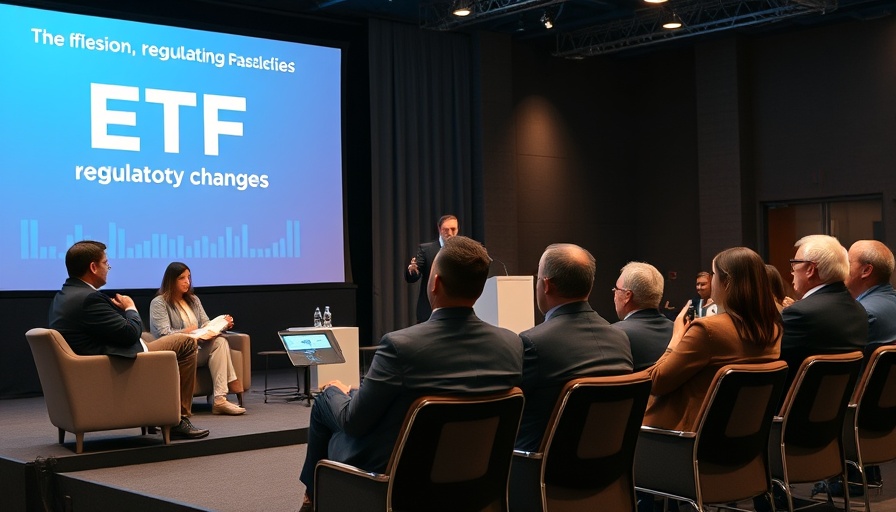
A New Dawn for ETF Regulations: What Lies Ahead
In the ever-evolving landscape of the ETF industry, a notable shift is expected with the emergence of a more lenient regulatory framework under the anticipated changes in the SEC. Panelists at a recent session during the Exchange Conference in Las Vegas unveiled an optimistic outlook, asserting that a "cloud has lifted" on regulatory hurdles that have long hampered innovation. Joe Mannon, chair of the private fund formation group with Vedder Price, emphasized the transition from stringent enforcement toward a focus on facilitating growth and innovation, particularly concerning dual-class structures and crypto ETF products.
Understanding the Shift: The SEC's New Approach
The environment for ETF issuers is reportedly shifting towards a more conducive climate for innovation. With many SEC staffers accepting buyout offers, the expectation is that the Commission will pivot from a pattern of "regulation by enforcement" towards fostering dialogue. Mark Greer, a partner at Stradley Ronon, points to this as a generational opportunity for asset managers to engage with regulators on emerging trends in the ETF space.
What Are Dual-Class Structures and Why Do They Matter?
One of the pivotal discussions during the panel centered on dual-class structures, which enable asset managers to create ETF and mutual fund share classes for the same funds. This mechanism, previously utilized by Vanguard, has gained traction as asset managers await the SEC’s green light. The SEC has signaled that addressing this matter is a top priority, with expectations of potential approvals by the end of the year. However, operational readiness for asset managers remains a concern, with industry leaders pondering whether the necessary infrastructure is in place to handle the anticipated changes.
The Crypto ETF Landscape: Navigating Innovation
With an eye on the future, expectations for crypto ETF innovation are rising among industry experts. As the regulatory landscape shifts toward accommodating more complex fund structures, investors and financial planners should remain alert to emerging products. With cryptocurrencies having become increasingly mainstream, the demand for investment vehicles that aptly reflect this trend is set to rise. The panelists’ insights suggest that staying ahead of these developments could position financial planners and wealth advisors as key interpreters of new opportunities in this rapidly changing market.
Preparing for the Future: Strategies for Financial Planners
In light of potential regulatory changes, financial planners and wealth advisors should prepare themselves with actionable insights. Understanding the implications of dual-class structures and upcoming crypto ETFs will be pivotal. As these regulatory adaptations may reshape the investment landscape, it is crucial for advisors to equip themselves with knowledge and strategies to effectively manage client portfolios in the wake of evolving regulations.
In conclusion, the potential restructuring of ETF regulations signals a transformative period for the financial planning industry. Financial planners and wealth advisors should monitor these developments closely to leverage the opportunities this new era presents.
 Add Row
Add Row  Add
Add 




Write A Comment